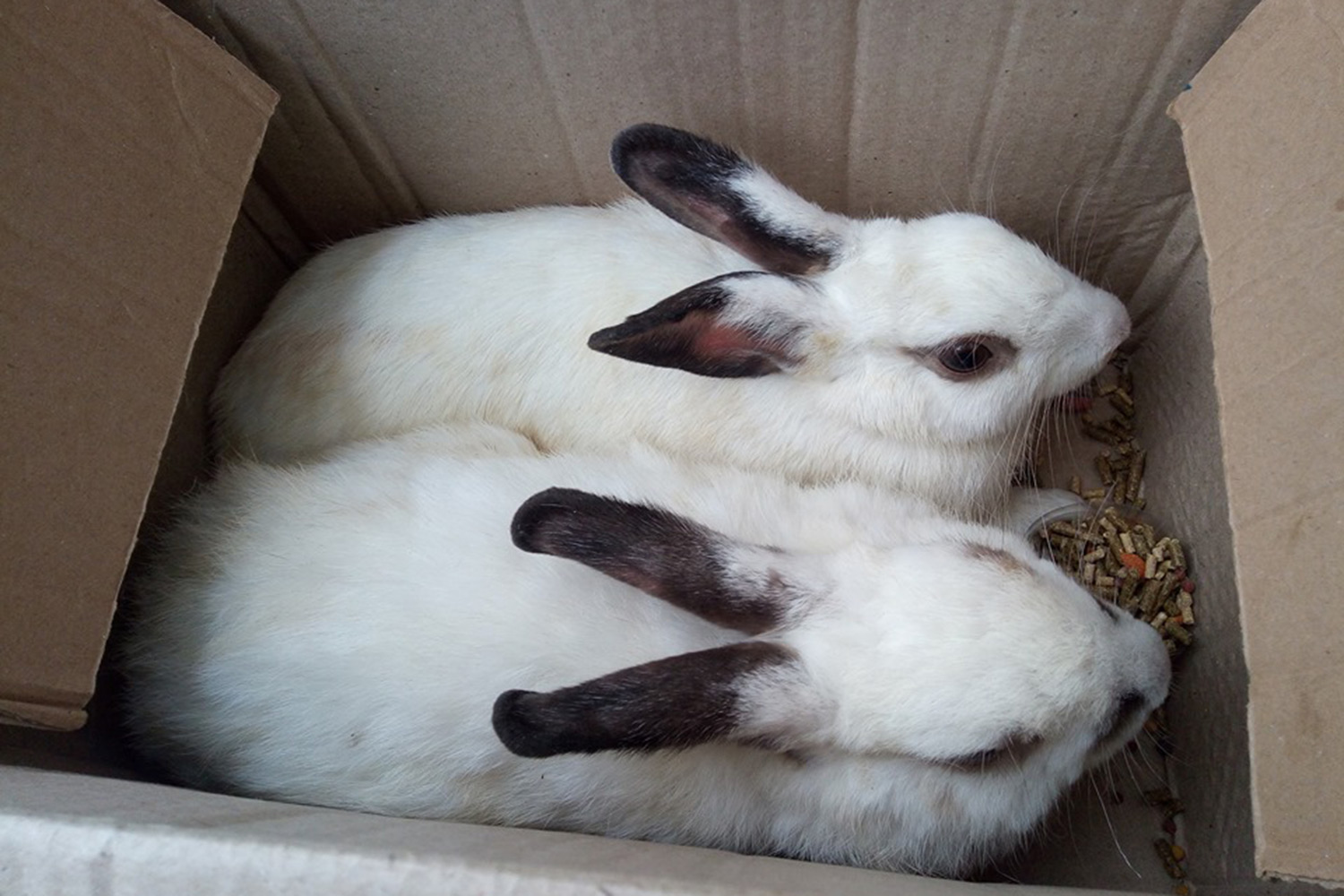
People have the misconception that a habitat suitable for wild rabbits must also be suitable for domestic breed rabbits. They are the same thing, aren’t they? This disastrous notion is what leads many rabbits to be abandoned in forests and parks, areas where wild cottontails seem to live happily. Unfortunately, domestic rabbits are not the same as cottontails. They have been through centuries of domestication, leaving them with significantly different brain structures that leave them vulnerable to predation.
In the summer of 2019 in Thailand, around 30 pet rabbits were found abandoned in a forest.
A witness saw three people drive up, unload several cardboard boxes, throw them into the forest, and speed off. When the witness went to investigate the boxes, she soon discovered they were stuffed with domestic rabbits.
The rabbits quickly broke free from the boxes and were scattering into the forest, so the witness called for help from her family and local rescuers. They successfully caught 30 rabbits – many of whom were weak and some with broken legs. Unfortunately, one was found dead in the forest, and two more died soon after their rescue due to their injuries.
This story illustrates how some people act in ignorance of basic rabbit welfare. Did these dumpers know that the forest was not a suitable area for domestic breed rabbits? Did they even care they were sending the rabbits off to their death? Was there perhaps nowhere else they could bring these rabbits?
We hear of stories like this around the world. This is not an isolated issue. We need to advocate for these rabbits and provide resources to people who need to rehome their rabbits, so that they do not end up dumping them somewhere where the rabbit will undoubtedly suffer.
Original story reported by Assawin Pakkawan at Bangkok Post
Article written by:
Sasha is an animal welfare advocate and bunny-momma of four! She has a Bachelors of Science in Applied Biology, Honours, from the University of British Columbia. She specialized in animal biology, welfare, and conservation. When she is not doing research or working on her computer, she can be found exploring the Pacific Northwest looking for birds!




